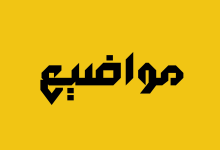Operation Mongoose, conducted in Afghanistan in 2003, stands as a pivotal chapter in the larger narrative of the Afghanistan War, a conflict that has shaped the geopolitical landscape of the region for decades. Positioned at a latitude of 31.3169436 and a longitude of 66.3198563, this operation unfolded within a complex web of political, social, and military dynamics, with significant implications for both the immediate theater of war and the broader global security environment.
As chronicled by historian Dennis Showalter in his comprehensive work, “Encyclopedia of Warfare” (2014, p. 921), Operation Mongoose represented a concerted effort by the United States to assert its military might and strategic influence in the Afghanistan theater. Showalter’s meticulous analysis sheds light on the multifaceted nature of this operation, delving into its strategic objectives, operational tactics, and the broader context of the Afghanistan War.
At its core, Operation Mongoose exemplified the United States’ commitment to combating the forces of extremism and terrorism, with a particular focus on dismantling the entrenched power structures of al Qaeda and the Taliban. This campaign unfolded against the backdrop of the post-9/11 era, marked by heightened security concerns and a renewed sense of urgency in addressing global terrorism.
While specific details regarding the participants of Operation Mongoose are not explicitly provided, it is evident that the primary actors in this conflict were the United States, representing the coalition forces, and the entrenched insurgent groups, namely al Qaeda and the Taliban. The conflict’s theater was predominantly land-based, characterized by intense ground engagements, covert operations, and strategic maneuvering across Afghanistan’s rugged terrain.
The outcome of Operation Mongoose, as documented in the provided information, unequivocally favored the United States and its coalition allies. The decisive military action undertaken during this operation dealt a significant blow to the capabilities and morale of both al Qaeda and the Taliban, underscoring the coalition’s determination to root out terrorist networks and stabilize the region.
From a broader perspective, Operation Mongoose exemplifies the inherent complexities and challenges of modern warfare, where conventional military tactics intersect with asymmetrical threats posed by non-state actors. Moreover, its inclusion in the Afghanistan War narrative highlights the enduring nature of conflicts in this volatile region and the ongoing efforts to foster stability, security, and peace.
In conclusion, Operation Mongoose emerges as a defining moment in the Afghanistan War, symbolizing the United States’ resolve to confront and neutralize the threats posed by terrorism. Through meticulous research and analysis, historians like Dennis Showalter provide invaluable insights into the strategic significance and operational intricacies of this pivotal military campaign, enriching our understanding of the broader dynamics shaping contemporary conflict zones.
